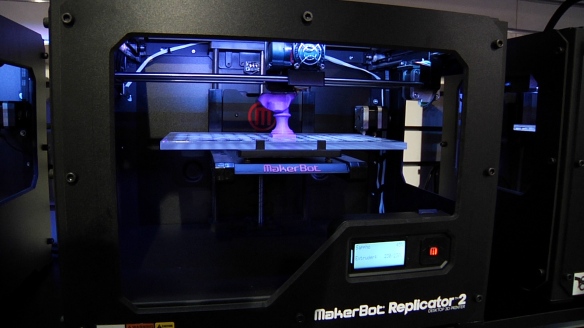“Tea. Earl Grey. Hot” — Picard in ST:TNG
…Oops in the title, I meant serious scientists, of course 😉 The first time I saw a 3D printer under 10000$ in action, I told myself they were right again, “they” meaning Star Trek.
Almost a year ago, we bought a MakerBot Replicator 2 for our research group. Our interest was to be able to do fast prototyping, quickly create small pieces, adaptors and so on. It certainly change the way approach our laboratory experiments, more importantly we do not have to go to machine shop until we have a much better idea of what work and what doesn’t. We were even able to start exploring way 3D printing could change one our field of applications (brachytherapy, if you need to know!). We also found out that printing with PLA resulted in much more sturdy and better print quality than ABS plastic.
3D printing is a game changer not only in scientific research and engineering but also in medicine, where application in dentistry and organ printing, liver was even predicted in 2014! Of course you can find this great talk about 3D printing and airplane or 3D printing in space.
However, 3D printing will become mainstream technology very quickly. Already, cheap 3D printers can be bought in Staples. The biggest news, to me, is that public libraries are about to make3D printing accessible to… the public. The Toronto public library has made such announcement recently: 5 cents a minute, maximum of 2 hours of printing time. Of course, this bring a fairly good number of questions regarding intellectual properties. For instance, you could print your own Lego-like blocks at home; the raw material costs about 40$ per Kg. If you type in Google “3D printer and IP”, you will get thousands of hits.
If you need a good primer on 3D printing technology, Wikipedia has a very nice one.


